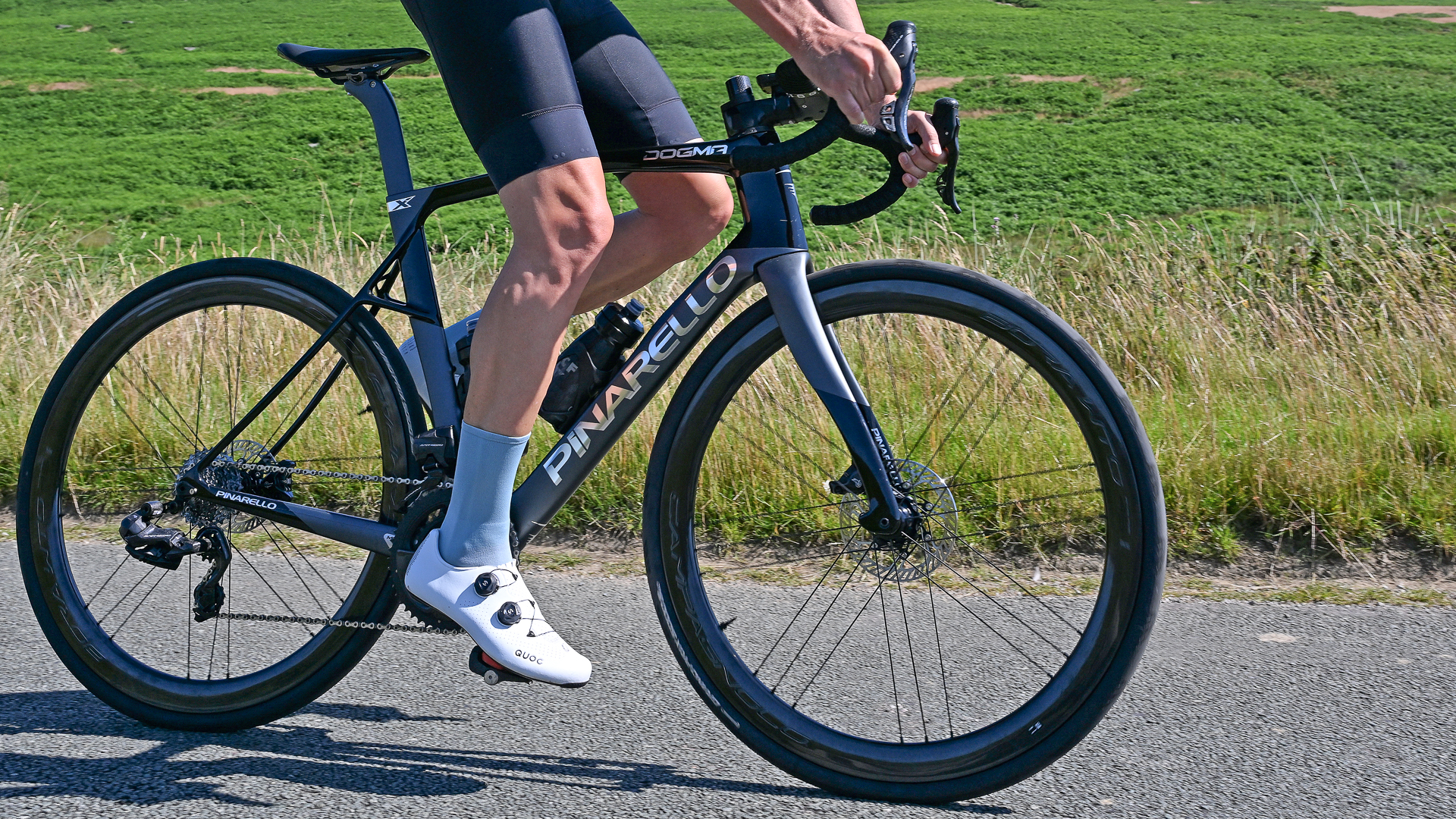
Few brands better embody the romance of Italian cycling than Campagnolo. At nearly 100 years old, it represents the passionate, traditional aspect of our sport, particularly when compared to the clinical effectiveness of Shimano and SRAM and, much like with Alfa Romeo on the automotive side, Tifosi will often overlook a product's shortcomings or quirks.
And so it is likely to be with Campagnolo’s latest flagship groupset, Super Record WRL 12-speed. WRL stands for wireless, and just like SRAM 9 years ago, Campagnolo has ditched any form of cabling or physical connection between the shifters and derailleurs. This will make home mechanics’ lives easier when fitting a whole groupset and reduces the number of cables that must pass through the handlebar, headset and frame. As a long-time SRAM eTap/AXS user, I love wireless groupsets and have had zero issues with shifting or connectivity over tens of thousands of kilometres.
Campagnolo aficionados have long had to pay for the privilege of riding their favourite Italian marque, and Super Record WRL is no exception. It is considerably higher priced than the already expensive Dura-Ace and Red AXS groupsets, and there is no option to include a power meter either yet. RRP is about £4,500, putting it well above the Japanese and North American brand’s power meter-equipped groupsets. Its cost pushed the price of the Dogma X that I tested it on over the £14,000 mark.
Weight is competitive though, near as dammit all three groupsets weigh around 2,500 grams, depending on a few option choices.
Shifters
Perhaps even bolder than going wireless, Campagnolo’s choice to ditch the iconic thumb shifters has caused uneasy murmurings among the faithful. Instead, shifting is actuated by two cutout levers on either side that sit behind the brake levers - a bit like a mashup of SRAM and Shimano’s systems.
I found them easy to use from the hoods, but I had to cock my wrist at an unnatural angle to reach the higher button on either side when in the drops. Playing around with the shifter’s position or a different handlebar might have alleviated this a little, but I don’t think it would have fully cured the problem. As the two buttons/levers sit on top of one another rather than side by side like Di2, it is always going to be hard to fit in two levers that are large enough to use easily and still both be accessible from the drops and the hoods.
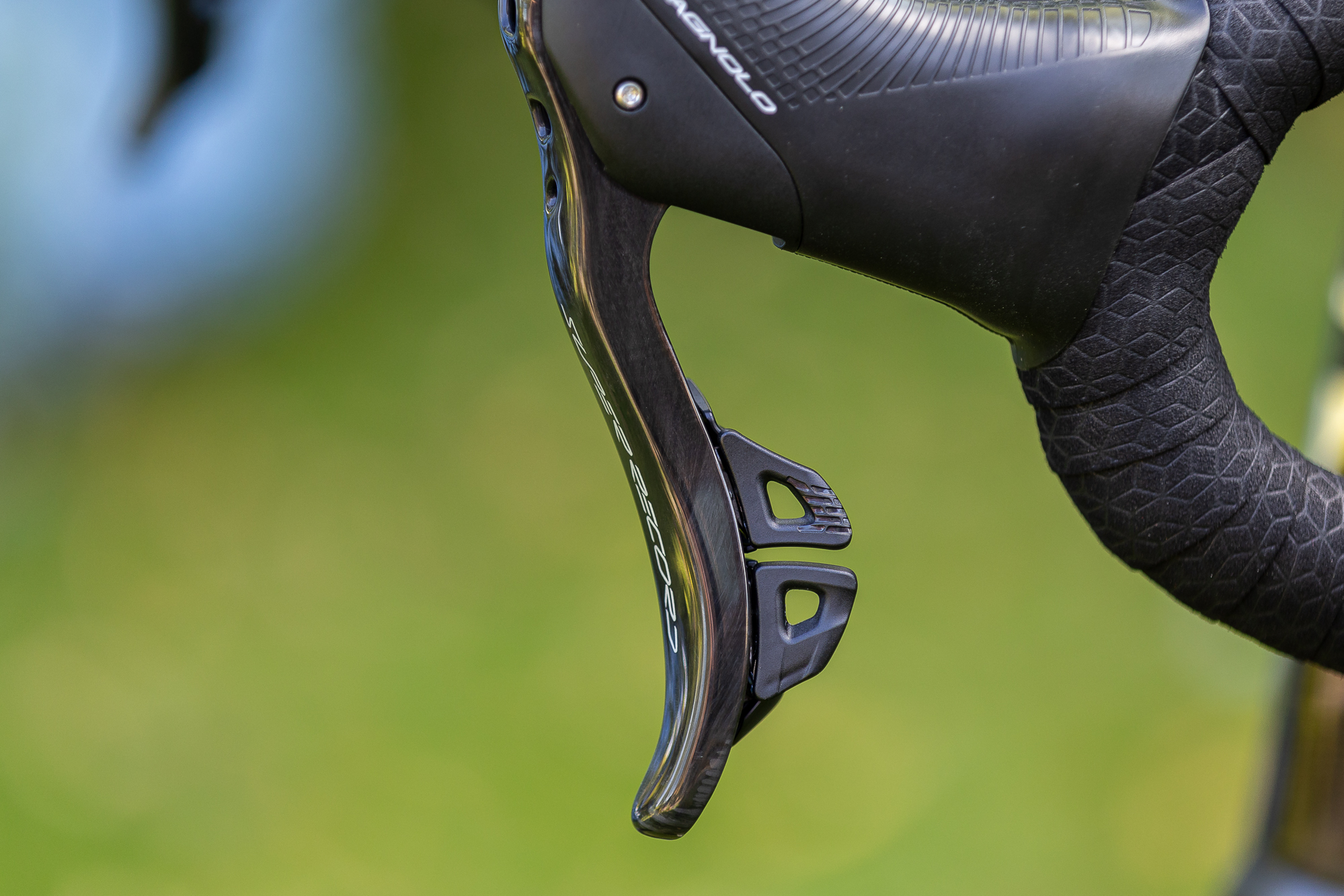
I would also have liked the action of the levers to have been more distinct, with each press accompanied by a tangible ‘click’. Compared to SRAM AXS and previous Campagnolo, the action was a bit ‘mushy’ and vague - it didn’t give much haptic feedback as to whether I had actually pressed hard enough to call for a shift or indeed pressed too much and shifted two sprockets at once. This is an odd criticism as Campagnolo has always been known for feeling more mechanical and providing a better connection to the drivetrain than other brands.
The hood shape was generally excellent though, and I found it very comfortable straightaway. The exaggerated, bent-in shape of some Campagnolo hoods is gone, but there is a subtle inward curve that feels really good. However, there is an odd, cookie-cutter section under the hoods behind the levers that isn't comfortable at all - firmly gripping the hoods whilst climbing out of the saddle this sharp edge could be felt very distinctly. Strangely unergonomic given how nice the rest of the design is.
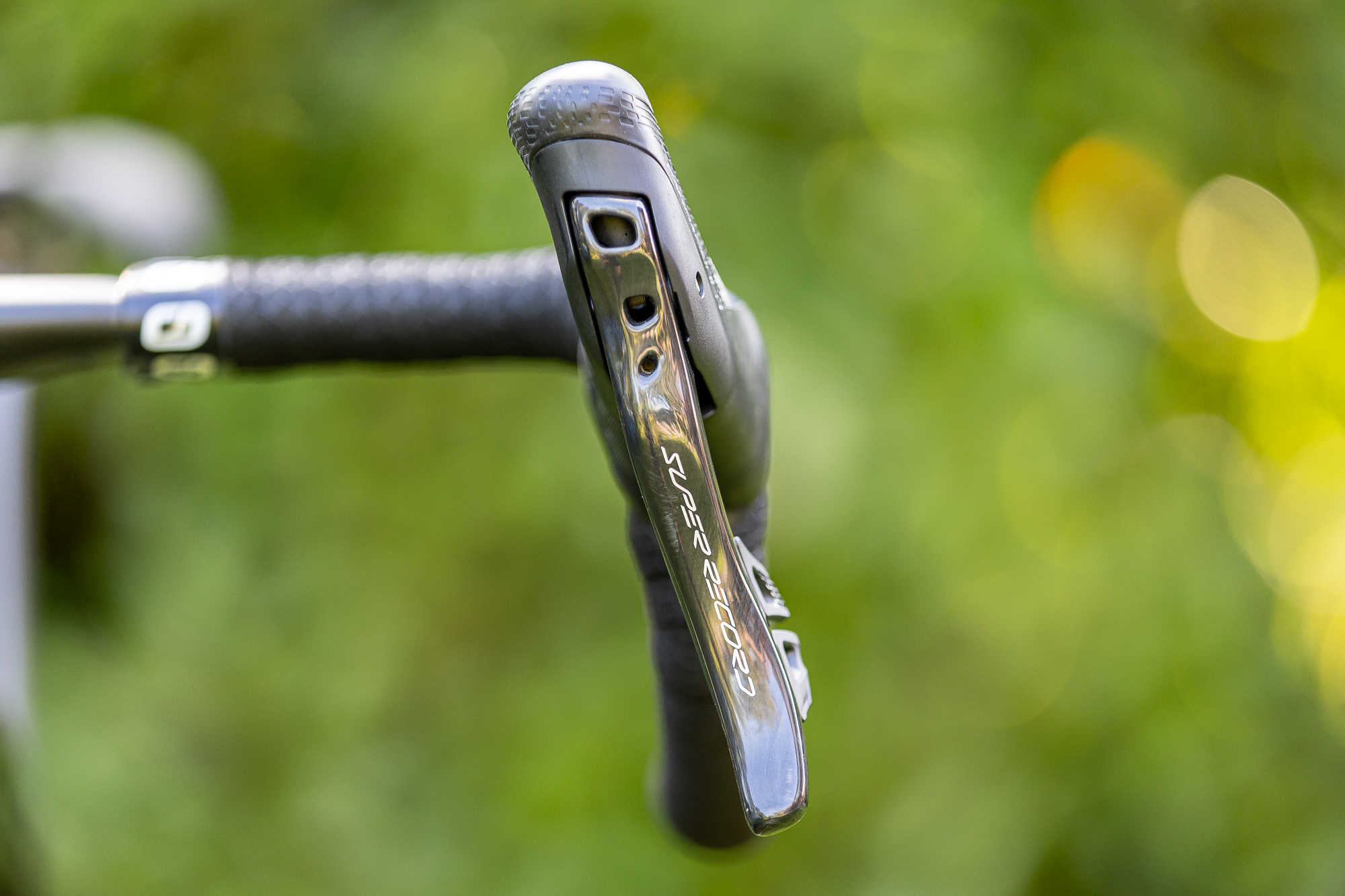
Perhaps it was the warm weather or my efforts, but the rubber covering the hoods didn’t feel very grippy to me. I usually ride without gloves if I can, but I found myself considering wearing some mitts for a better purchase.
If the shifting was indistinct at the levers, it certainly wasn’t at the back end. A very definite clunk (and occasional clang) accompanied every shift and left you in no doubt that a ratio change had been accomplished. This is in sharp contrast to the Dura-Ace Di2 I rode recently where I frequently couldn’t feel the chain move and had to look down to check sometimes.
Two buttons sit on the inside of the shifters, allowing the system to be adjusted and turned off/on (useful for travel) while the small LED indicates battery charge (for the coin cell in each shifter) or mode. However, there aren't any 'extra' programmable buttons that could be used to scroll through computer screens for example.
Derailleurs
By far and away the most striking and most commented-on aspect of the groupset was the size of the derailleurs. Both front and rear units are considerably larger than SRAM’s wireless equivalents. It’s impressive that Campagnolo has managed to keep the weight down to match Shimano and SRAM given their size - copious quantities of carbon fibre have been employed throughout the derailleurs, and indeed the rest of the groups,t in order to do this, which does at least help to explain the price.
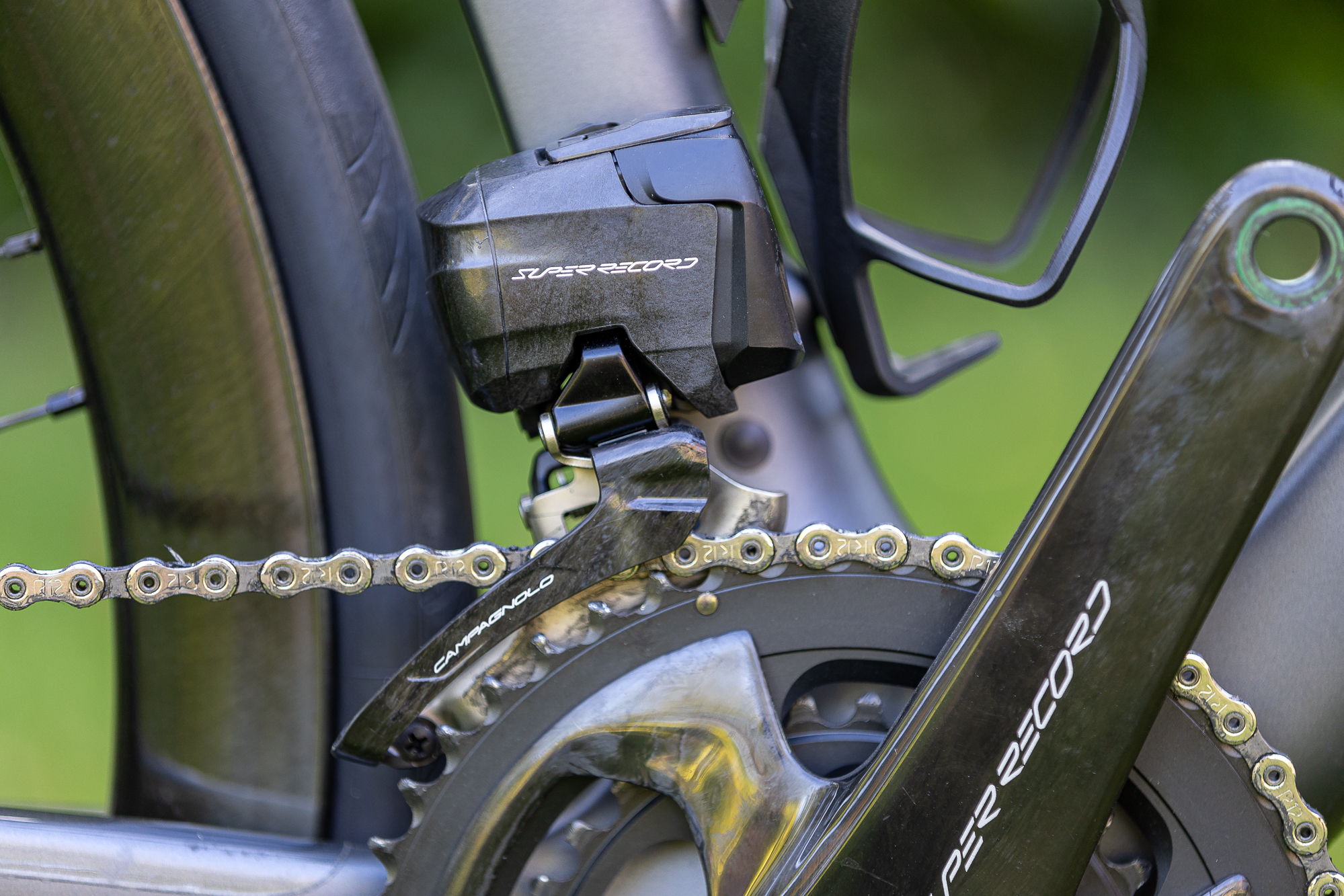
Whereas SRAM uses a matching pair of interchangeable batteries on its wireless derailleurs, Campagnolo has used a completely different design for front and rear mechs, meaning that, unlike SRAM, you can’t swap them around if you run out of power. It’s not clear whether this is for technical/functional reasons, or if Campagnolo encountered patent issues with this as they have hinted at. Either way, it seems to be a much less useful way of doing things. Furthermore, each of the batteries is bigger than the SRAM unit, contributing to the size of the derailleurs.
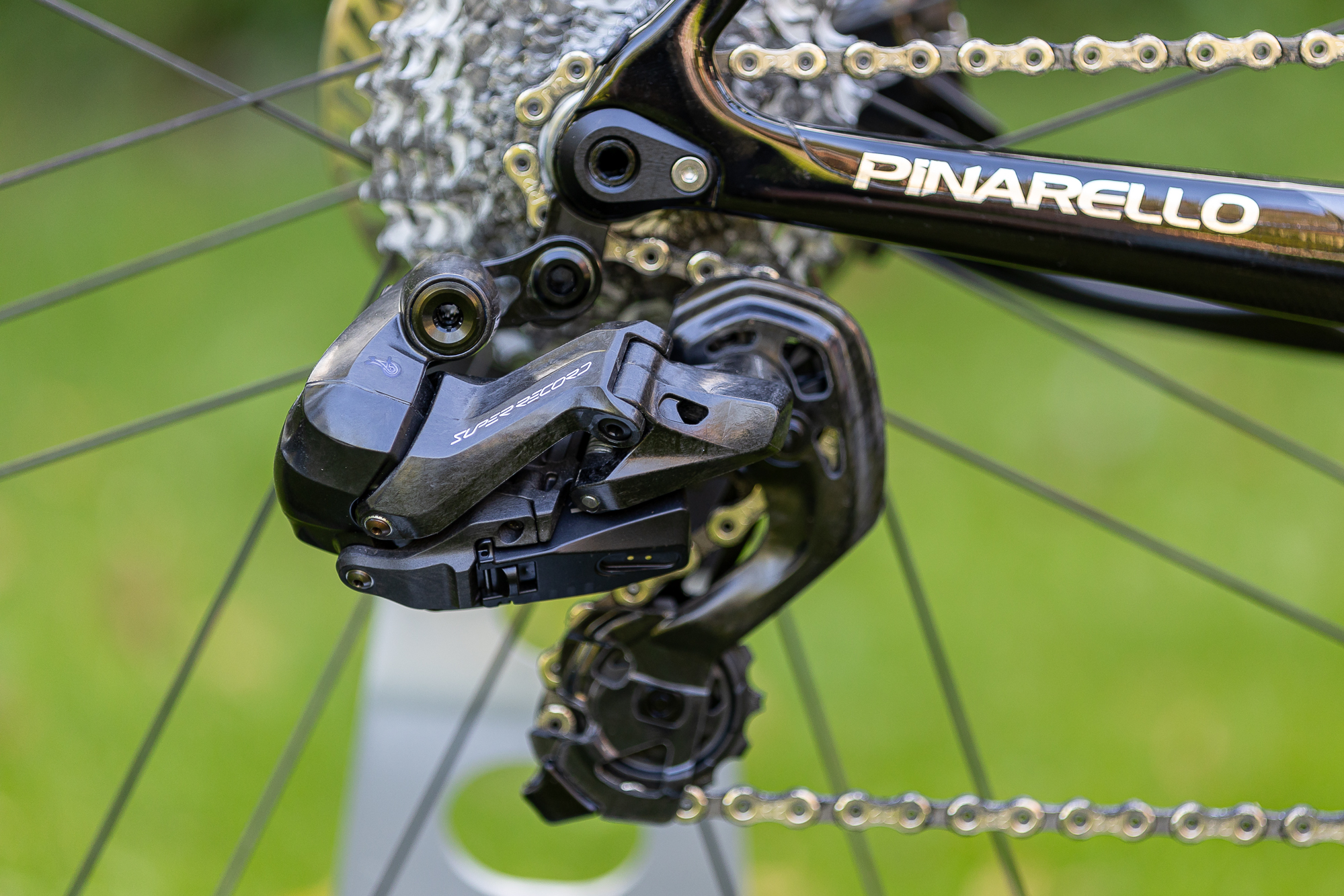
Charging is quick and easy, and can be done with the batteries in place or off the bike using the magnetic cable. It takes about an hour to reach full capacity. However, in order to be able to charge on the bike, the charging ports are open to the elements and don’t have a cover, although I suppose that a bike with Super Record WRL on it is highly likely to be a dry weather-only machine.
Pairing the shifters and derailleurs is a little bit like a reaction test - wait for the lights to change colour and then press the appropriate button, but was straightforward enough when I managed to get the sequence right. There is an accompanying app that gives information about the system and allows a degree of personalisation, but it isn’t required to set up or use the groupset. It can be happily ignored unless you want to tinker.
Chainset and cassette
In another departure from tradition, Campagnolo has followed SRAM in using smaller chainrings and a smaller 12-speed cassette to achieve its desired ratios. The test bike had a 50/34 chainset and a 10-29 cassette, which gave me both a higher and a lower gear than my usual 52/36 with an 11-30 cassette. 45/29 and 48/32 chainsets are also available as are 10-25 and 10-27 cassettes, so a huge range of potential ratios are available to suit any rider or terrain. It was easy to find the cadence I wanted, and I never felt stuck between ratios and the all-steel construction should help with longevity too.
The carbon chainset looked lovely when caught in the sunshine, and, along with the titanium axle and aluminium rings, helps keep the weight down to under 600 grams, significantly undercutting Dura-Ace.
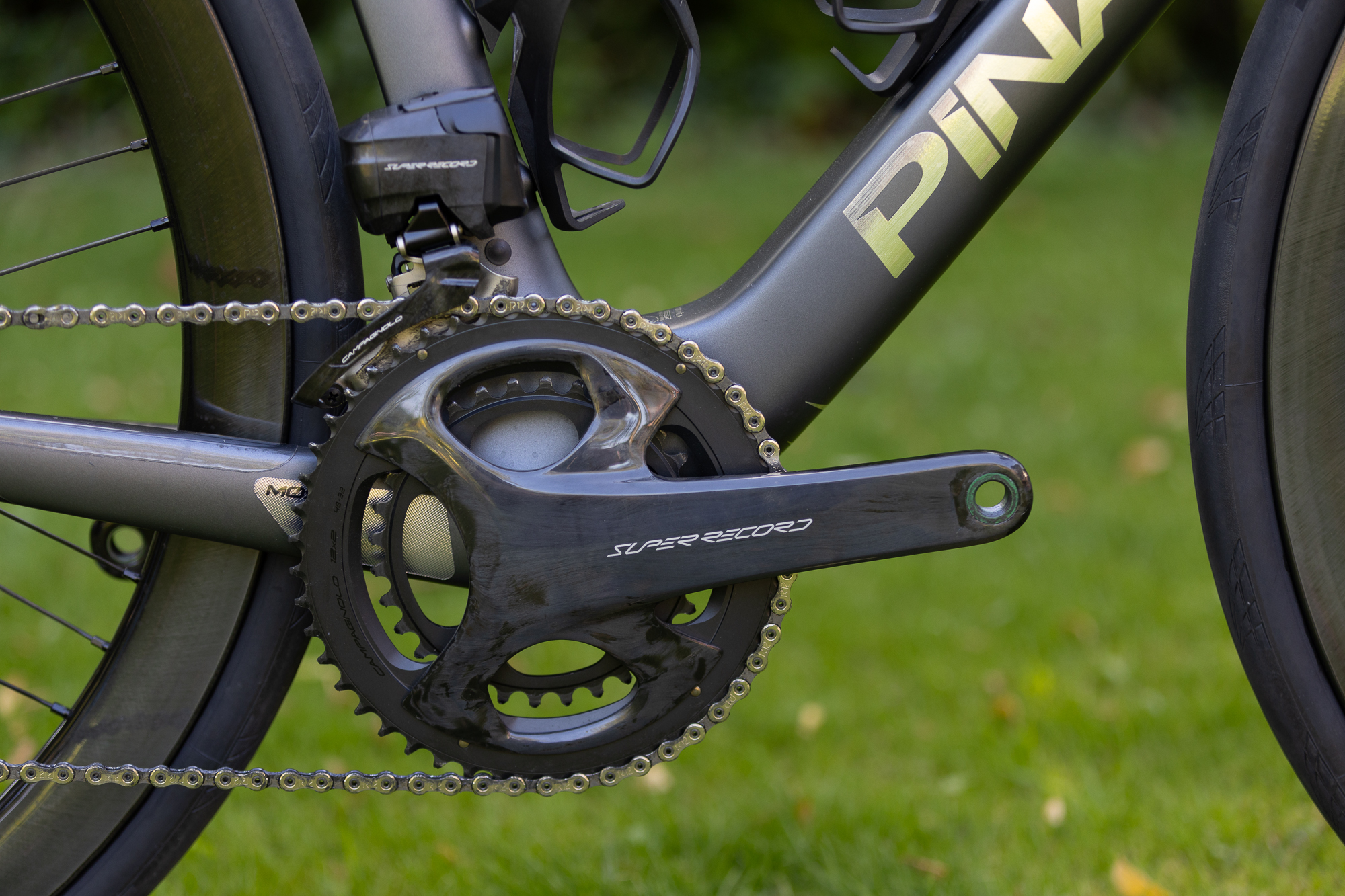
The drivetrain was perfectly happy to be cross-chained as the front derailleur makes small adjustments as the rear derailleur moves and I frequently used 50-29 so that I didn’t have to bother shifting to the small ring. As mentioned, shifting was a bit agricultural feeling sometimes, and was certainly slower than Dura-Ace. Just like with SRAM, I found that shifting was a discernibly 4-part process both front and rear; press a shift lever, take the pressure off the pedals, wait a fraction for engagement, and power back on the pedals, whereas Dura-Ace would probably have completed the action by the first comma.
Brakes
The Super Record WRL hydraulic disc brakes are superb. Quiet, powerful and easy to control, they were a pleasure to use and a highpoint of the groupset. The levers are quite stiffly sprung, which took me by surprise at first but not in a bad way, and once the pads come into contact with the rotors the power is there in spades - one-finger braking from the hoods is not an issue, helped by the lever’s very comfortable, slightly angled shape and the hood’s slim design.
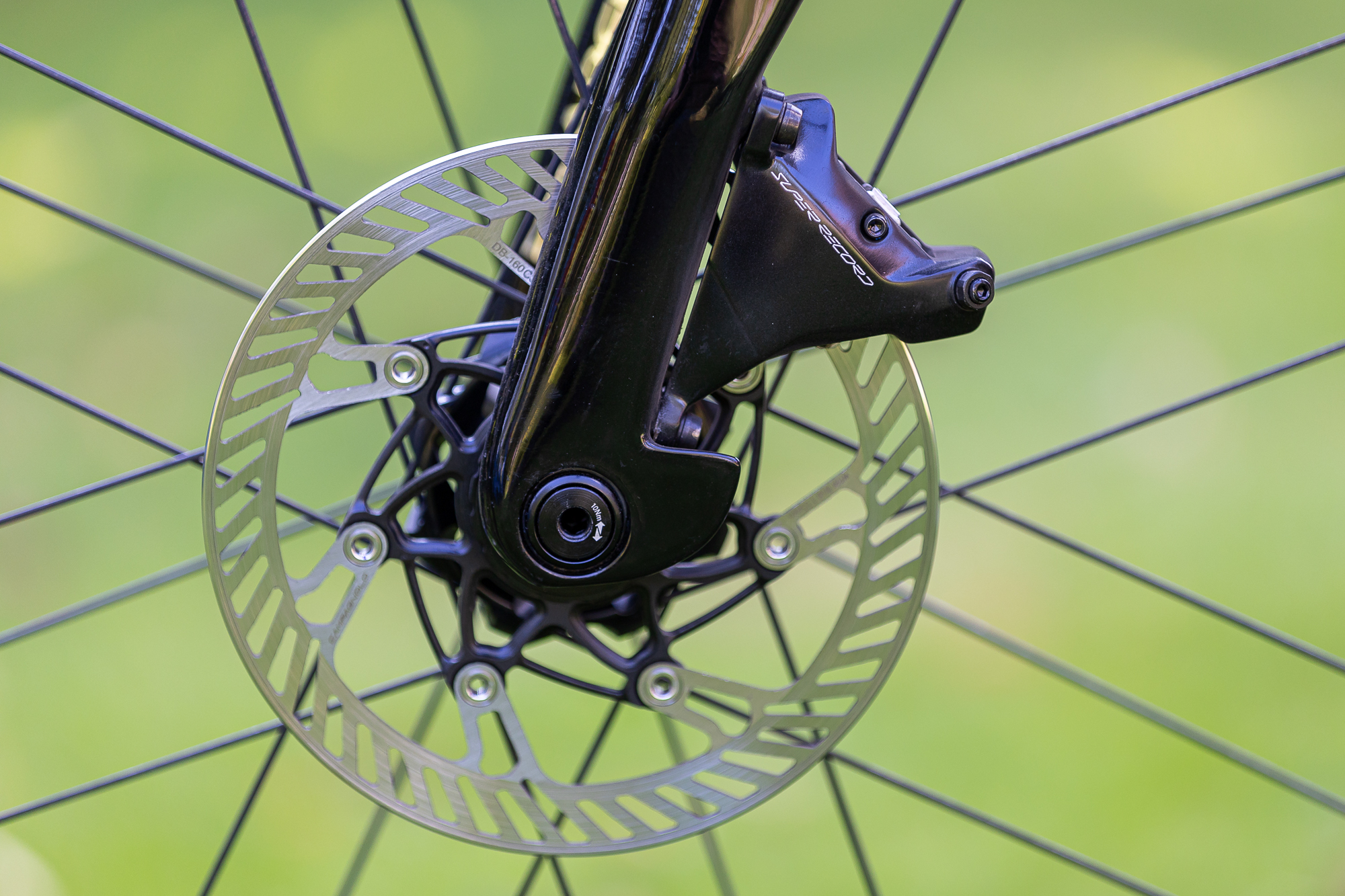
There was never any annoying ‘ting’ from the pads slightly catching the rotors, even after some decent descents and hard braking - Campagnolo says that better pad return was something that they had worked hard on.
Reach is very easy to adjust, with the screw accessed through a hole in the front of the lever.
Value and conclusion
Value is a tough one. The RRP of the groupset is £4,499 which is about £800 more than Shimano Dura-Ace Di2 (without a power meter) and a couple of hundred pound more than either SRAM Red or Dura-Ace with a power meter. So it is certainly ‘reassuringly expensive’.
But, whereas previously, some folk were more than willing to pay a premium for Campagnolo’s style, finesse and rich heritage, I think that this is a bigger ask than ever with Super Record WRL. The bulk of the derailleurs, the idiosyncratic shifting, different batteries and the price aren’t sufficiently offset by its fantastic braking performance and (mostly) neat hood/brake lever design. Its weight is competitive but not class-leading and the lack of a power meter (there is one planned, but no doubt it will add to the cost) would seem to gift SRAM and Shimano sales. It won’t help Campagnolo's cause that there are no 2024 WorldTour teams using their groupsets either.

I am absolutely not against high-priced, premium products, but for me, there has to be at least a semblance of justification to pay more than cold logic might dictate. That can be performance, weight, style, reliability or service and I am struggling to justify the extra cost of Super Record WRL on any of these bases, although you may be attracted to its rarity value - I haven’t seen another bike with Super Record in the 12 months since it was launched.
Ultimately, I wouldn’t actively avoid Super Record WRL if it was specced on a bike that I really wanted, especially if it was by an Italian brand, but I wouldn’t seek it out or pay a premium for it either. For me, it lacks a sufficiently compelling unique selling point to justify its cost or overlook some of its foibles.







